Above ground pools are more likely to experience algae growth due to the lack of circulation of water. This means that they will need to be drained regularly to keep them clean and filled with fresh water.
There are a few different ways to drain the water from an above ground swimming pool. One of the most common is to use a pump. Pumping the water out of the pool can take a long time, but if that’s not an option, you can always use a garden hose to drain your pool.
In this article, we will go over the best and most effective ways how to drain an above ground pool and some necessary precautions that need to be considered during the process.
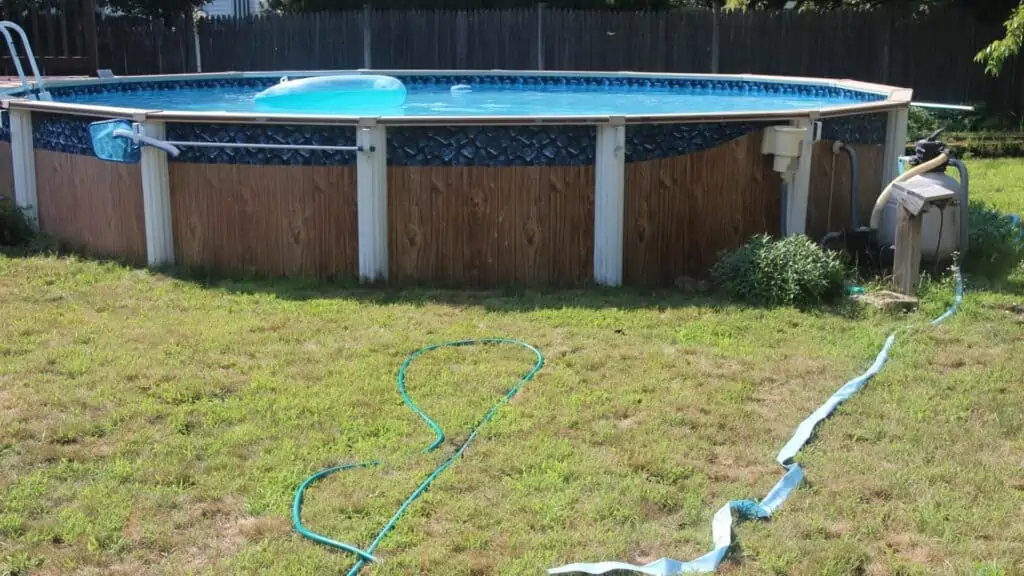

Why should I drain my above ground pool?
Draining your pool will help to prevent water damage to your home, pool deck, and surrounding area. It will also help prevent algae growth, which can clog your pump and filter system.
How often you should drain your above ground pool will depend on a few different factors, such as the climate where you live and how often you use your pool. In general, it is recommended to drain your pool at least once a year.
Draining the pool for the winter season
It is very important to drain (at least partially) and prepare your pool for the winter season. See How to winterize an above ground pool. This will help to keep the pool clean and free of debris. After you’ve completed the drainage, cover it with a winter cover before the first snowfall, so you can avoid any loose leaves and debris falling inside your swimming pool.
Getting rid of the swampy water
Swampy water can be a real nuisance when it accumulates in an above ground pool. This water can cause bacteria and other organisms to form and flourish, leading to cloudy water and a foul odor.
Standard pool maintenance
It is important to maintain a standard pool maintenance schedule in order to keep the pool clean and healthy. Regularly check the water level, clear debris, and adjust the filter if necessary. If you notice any changes in the water or if it appears that the pool water is not in the best shape as it should be, then it may be quicker and easier to drain it.
Improper chemical balance
If the pool hasn’t been used for a long time, there may be an improper chemical balance, which may become a haven for algae and other types of bacteria to grow. This can be unhealthy or even harmful if you intend on using the swimming pool soon.
Once the pool is drained, it is essential to refill it with fresh water corrected by using by adding chlorine and other chemicals to keep a healthy and hygienic pool.
Draining above ground pool because of algae
Draining an above-ground pool due to algae is often necessary when the infestation becomes severe. Algae can clog filters, reduce water circulation, and create an unsightly green tint.
By draining the pool, one can effectively remove the algae, clean the pool surfaces thoroughly, and then refill with fresh water, ensuring a healthier and clearer swimming environment.
How to drain above ground pool
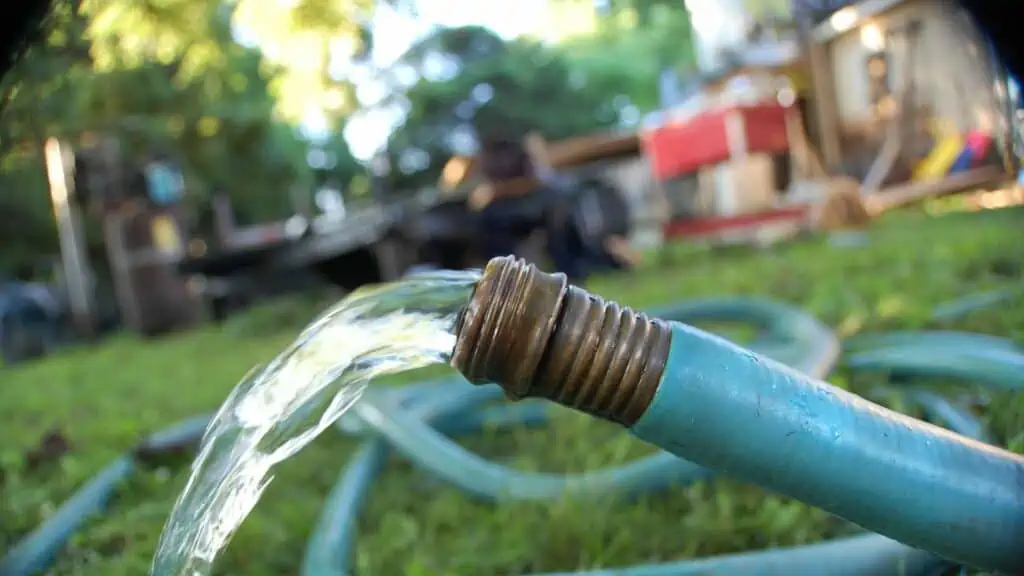
There are a few different methods for draining an above ground pool. And you can choose the best method of how to empty above ground pool that fits you and your needs. Here are some of the most common methods for draining above ground pool.
1. Using a submersible pump
Purchasing a small submersible pump can prove to be a smart investment. It will speed up the draining process and protect your pool liners from ripping.
Make sure that the power cord of the electric pump can reach from the pool to an outdoor electrical socket. If you don’t have an outdoor electrical socket available, use an extension cord or run one through your home and out another window or door.
A pump similar to the Superior Pump 91250 1/4hp available on Amazon would work perfectly well.
You just need to connect a hose, drop the pump into the pool and switch it on. Job done!
2. Using a drain plug
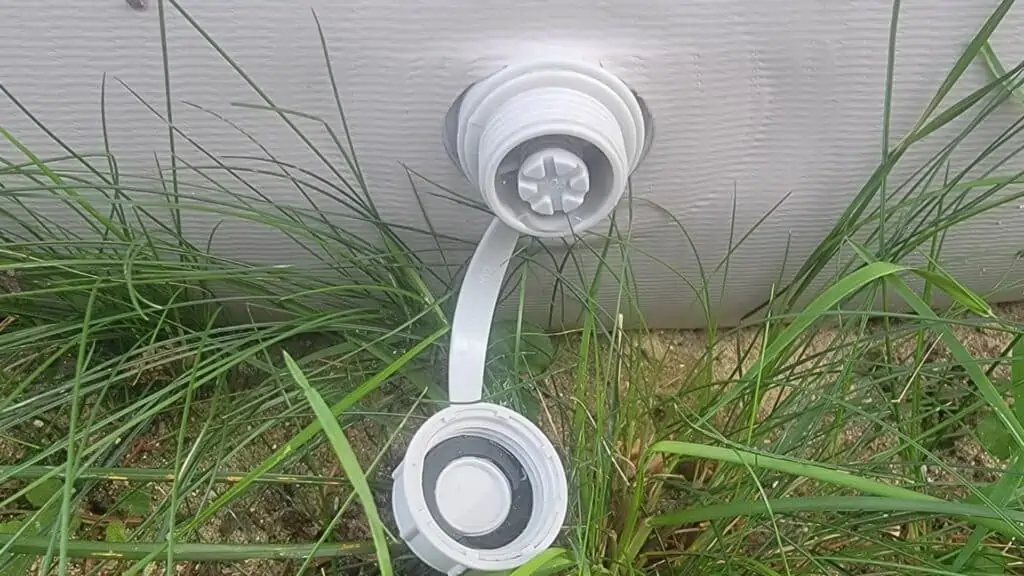
This depends on the particular type of above ground pool you have but you may find that there is a drain plug incorporated into the pool specifically to allow you to drain it.
For example, the Bestbuy Bestway 24′ x 12′ x 52″ below incorporates a built-in flow control valve to allow you to drain away the water at the end of the season.
3. How to drain a pool with a hose
You may struggle to do this if your pool is on a totally flat site but if you have a lower level in your yard then it may work well for you.
How to go about it:
- Put one end of a standard garden hose into the pool.
- The bottom of the hose may start to float so I actually have a small metal weight I use to tie to that end of the hose to keep it down at the bottom of the pool liner. You could get someone to hold it at the bottom too.
- Run out the hose to a convenient area of the garden where the water can drain out or into a sewage input/drain. Make sure the end of the hose is below the level of the other end in the pool otherwise the hose siphon effect will not begin.
- Suck on the hose to get the water to start draining but make sure you do not raise it above the other end.
- Just leave it running like that as it will take quite a while to completely drain.
- Inevitably not everything gets siphoned out so use a sponge and a bucket to remove the last few inches of the water until you are left with an empty pool.
If you don’t feel like sucking on the hose to start the siphon (so you won’t get a mouthful of dirty water) then you can buy a self-starting siphon hose which can also be used as a pool vacuum to get the sand and other heavy dirt out.
The Shake-a-Vac Spa & Pool Water Vacuum & Self-Starting Siphon Drain for Hot Tubs shown below is available on Amazon.
How much time will it take?
It depends on how large and deep your pool is and the method you use, but the average time it takes is around 14 hours to drain a 10,000-gallon pool.
Removing any remaining water
Whatever method you are using for draining your pool, you will likely need to remove any remaining water that is left on the ground of it. This can be done by using a hose or a bucket. Make sure also to clean any debris that has collected on the pool surface.
Don’t forget to dry it out
Once you have finished draining the pool, let it dry out for a few weeks if possible before filling it again. If there is water remaining in the pool, this will be an excellent breeding ground for bacteria and other organisms to grow. Letting it sit empty also protects your pool from damage that could occur from freezing weather over the winter months.
Before you refill the pool, make sure to brush off any debris that has accumulated on its surface. If you don’t clean the pool well enough before refilling it, debris will end up in your water and can cause damage to your pump or to your skin. Also, test the water before refilling the pool. This is to ensure that the water is free of bacteria and other harmful organisms.
As you can see, there are several ways to drain an above ground swimming pool. Each method has its own pros and cons. You can choose the one that will work best for you based on your budget and how much time and money you want to spend draining your pool.
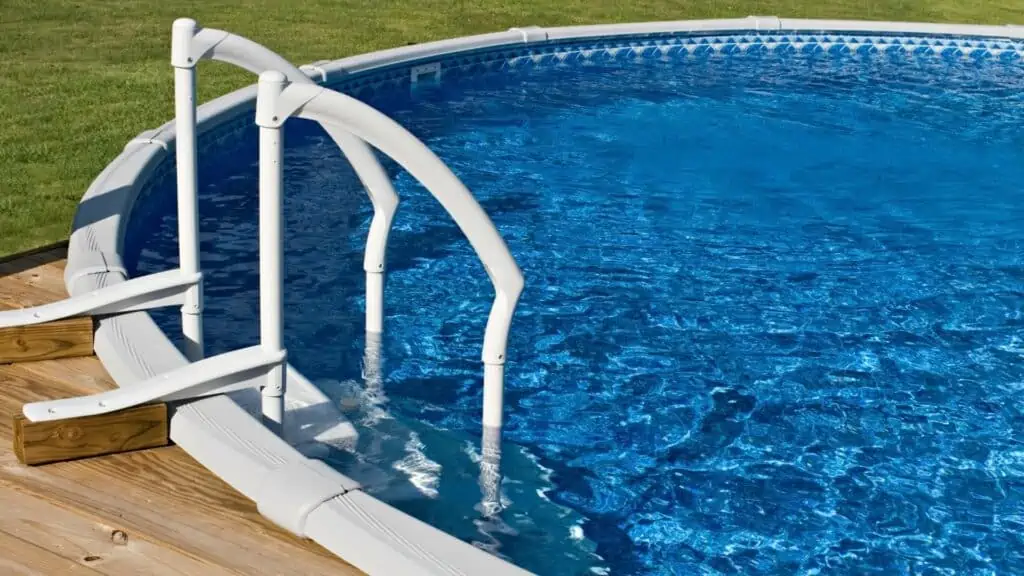
Where to dump pool water
This is a critical decision closely tied to how big your pool is. If it is not deep, you can simply dump all the water in your yard. The pool chemicals may not be good for your lawn or other garden plants though.
If it is a deep pool, you won’t be able to do this as the ground around will get soaked and may cause dampness problems in the future.
Depending on local regulations you may be able to dump the water into the sewer system or even perhaps into storm drains.
See my post Where to drain pool water
Pool Winterization Video Course
Using Swim University’s step-by-step video course, you can close and winterize your pool yourself, saving over $300 a year. The course covers closing both inground and aboveground pools.

Listen to our Pool Winterization Podcast to find out more:
How to refill a newly drained above-ground pool?
If you have just drained your above ground pool, there are a few things you need to do before refilling it:
- Clean the walls of the pool and the floor with a garden hose.
- Remove all the debris that has been collected in the pool over the past few weeks.
- The last step is adding fresh water to the pool.
Simply just add water
The obvious way to refill your pool is using a garden hose. This can take many hours or even a day, depending on the size of the pool.
If you intend to leave the hose completely to its own devices without watching it then make sure you clamp it to the side of the pool or use some other method to ensure that the water pressure doesn’t push the end of the hose out so that your yard gets flooded.
Use a water delivery service
In most areas, you can contact a water delivery service who will come along with a water tanker and fill your pool very quickly.
I have heard that in some places you can contact the local fire department who can also provide this service.
Getting the chemical balance just right
After you’ve successfully managed to drain your pool and get rid of the old water, it is also vital to get the chemical balance just right before you fill up the pool again. Add clean chlorine and test the water with a standard chemical testing kit.
You’ll also want to do a calcium hardness test, as well as an acid test, and ensure that the proper balance is achieved.
Conclusion
Above ground pools are easy to drain when you know how. Given the size of the pool, there are several ways this can be done. The most affordable option is to use a garden hose in combination with a bucket or pump, but if you have the money for it, using professional drain cleaners will help speed up the process quite a bit.
As you can see, there are several ways to do the job correctly. You can choose the one that will work best for your situation and the size of the pool.
Finally, remember that returning your pool to its original chemical balance is essential after refilling it again.
If you have an inground pool then please read my post How to drain a swimming pool






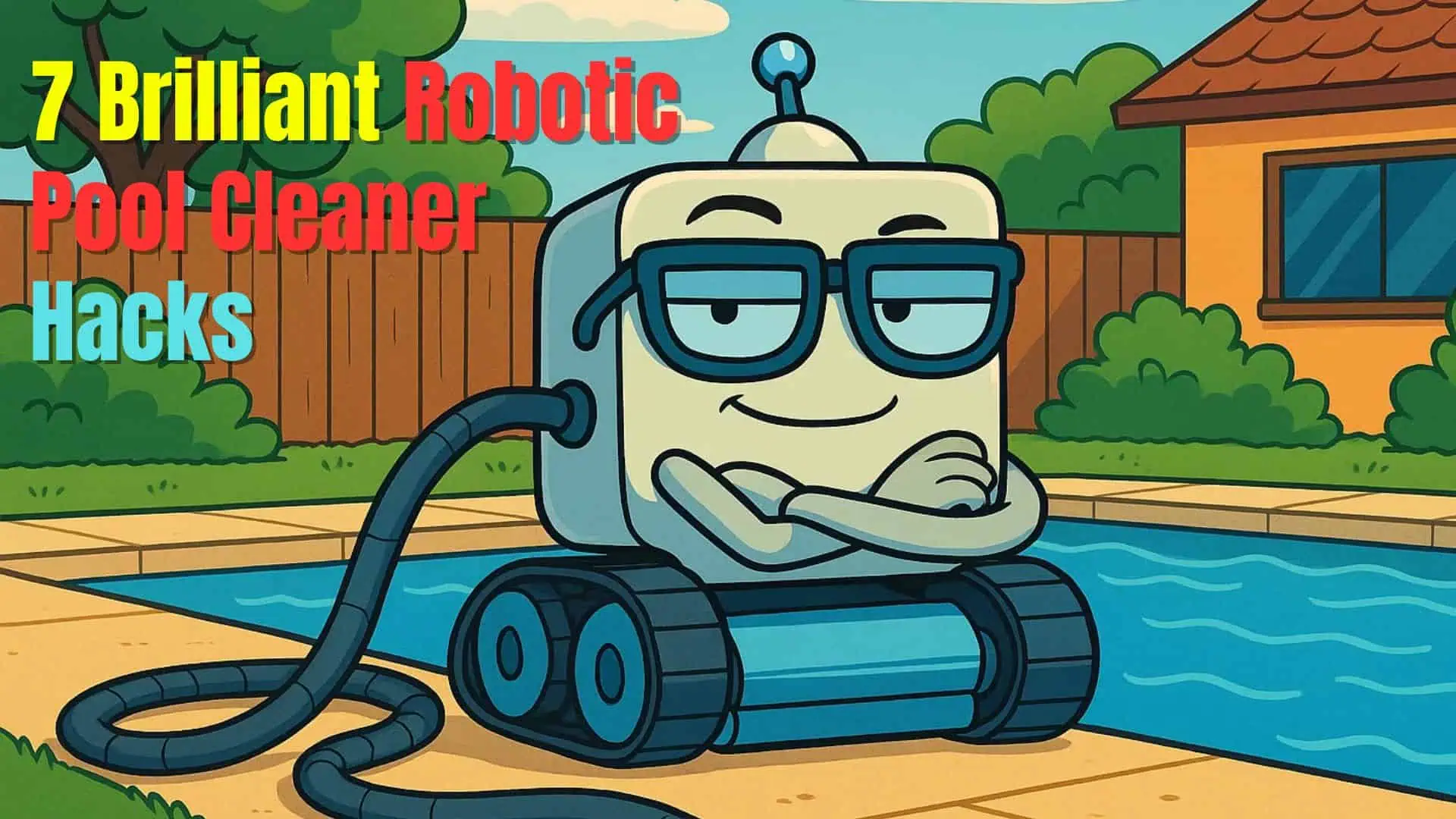

Leave a Reply